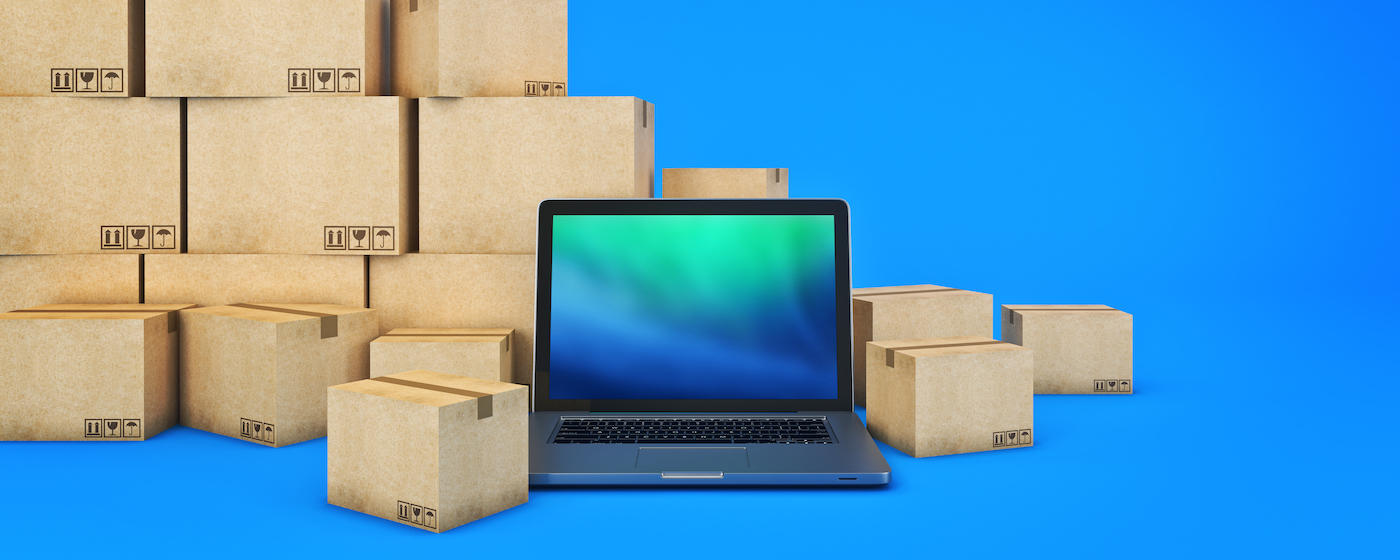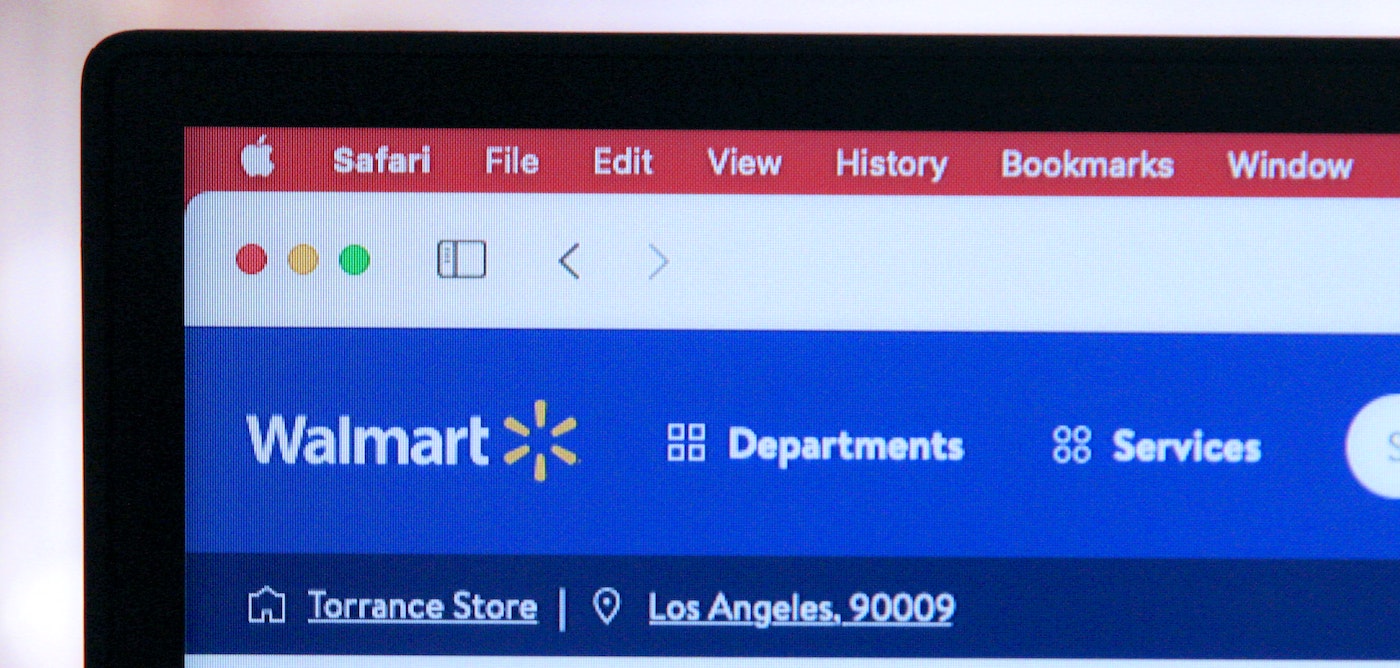Table of Contents
** Minutes
Why shipping APIs are important for ecommerce
How do you choose a shipping API?
As ecommerce businesses grow, so does the complexity of their operations.
Jumping from 20 shipments a day to 200 a day requires the help of some additional tech. But, you’ll soon find that bouncing from one tech solution to the other to handle shipments can get overwhelming as well.
That’s where shipping APIs come in.
Shipping APIs allow businesses to get all of the benefits of a shipping software right into their existing ecommerce tech stack. In today’s ecommerce world, meeting customer demand means being as efficient as possible and providing them a frictionless shopping experience.
Having all your shipping capabilities integrated into your current tech stack allows your team to get information faster, which in turn allows them to provide the best possible customer experience.
To further demonstrate the effect of this solution and how you can use them to positively impact your ecommerce business, we’ll break down everything you need to know about shipping APIs.
What are shipping APIs?
To understand what a shipping API is, you’ll first need to know that an application program interface (API) is essentially code that allows multiple web applications to communicate and send data to one another.
A shipping API is code that you can integrate and customise in your current tech stack so that shipping capabilities can be communicated and accessed across multiple applications. This could include you:
- Ecommerce website
- Warehouse management system (WMS)
- Order management system (OMS)
- And more
For example, let’s say someone places an order on your website. Rather than having to use a separate application to compare shipping rates and print labels, you can instead get that functionality directly from your website because the shipping API is gathering the data and functionality from one platform and displaying the necessary information and capabilities for you in your current platform.
Why shipping APIs are important for ecommerce
There are plenty of reasons why shipping APIs are important for ecommerce and they are only gaining more importance with current online shopping trends.
In a recent survey, 68% of online shoppers claimed that fast shipping would increase the likelihood of them placing an order.
While meeting customer expectations like this can be difficult, it is downright impossible through too many manual processes.
Shipping APIs can help eliminate the time needed to transfer data from one application to another, reduce human error in the process, and even reduce shipping costs if using the right API.
Track orders
Ecommerce businesses, especially during the holidays, can get overwhelmed by a rush of orders.
With simple manual processes, you might mistakenly pay for multiple shipping labels for the same order or lose track of a certain order on your 3PL platform as it is moving through the fulfilment process.
With a shipping API, the orders placed on your site are synced to the fulfilment centre’s 3PL platform, which is also synced to the shipping software generating the labels.
This means you can view and track exactly where your orders are during the entire fulfilment process without bouncing between too many applications.
This not only helps those who are managing inventory but could also help your customer support team in answering any questions regarding the status of your customers orders.
Increase shipping efficiency
One of the greatest benefits of using a shipping API is its ability to create a more efficient shipping process for your business.
For example, let’s say you’re using a 3PL company such as ShipBob to handle the fulfilment part of your shipping process. Through a shipping API, information such as which items their fulfilment centres need to package, which courier option makes sense to ship them, and any other specific information regarding the package will be automatically communicated to their team.
This means less confusion and less time wasted going back and forth on particular orders, resulting in faster fulfilment and shipping.
Secure shipping
Even in a perfect environment, no business is devoid of potential supply chain issues.
However, with the integration of shipping APIs, you can rest assured that any supply chain issues won’t be caused by anyone hacking into your tech stack.
APIs help to keep your shipping data secure and that there aren’t any hiccups in that data being transferred to your other fulfilment softwares or partners.
Potentially lower shipping costs
Depending on the shipping API you plan to use, you can actually save money on the cost of shipping.
For example, by integrating Shippo with your current tech stack, you’ll have access to pre-negotiated discounts on shipping labels from the nation’s top couriers. This can include up to 90% off on certain USPS labels and up to 86% off international shipping labels from UPS.
Over time, these discounted rates can add up and increase your overall profit margin on each order. Because the Shippo API integrates with multiple couriers and has automation capabilities, you can set the API always to select the lowest rate on particular orders.
3 common shipping APIs
One important aspect that ecommerce merchants should note is that not all APIs are the same.
Different APIs have different capabilities and serve businesses in different ways.
There are 3 common shipping APIs in particular that you’ll want to keep in mind since they have a positive effect for both your business and your customers.
1. Address validation
Your customers are human, which means they can make mistakes. This includes the potential for them to put a typo into your ecommerce site when filling out their address. This mistake, however, is only costly for you if you don’t have the proper tools set up.
Those costs come not just in the form of printing a new shipping label. It is also in the form of labour for fulfilling another product, handling the return, and a poorer customer experience means the potential to lose out on future revenue from that customer.
With Shippo’s shipping API, address validation comes with the integration of your ecommerce store. What this means is that when a customer types in their address while they’re checking out, the Shippo API will automatically be working in the background and cross reference that address with the USPS database to confirm that it is a legitimate address.
It will also help differentiate between a residential and commercial address, which could ultimately affect your customers’ shipping options and/or the shipping options you’re willing to offer.
This will effectively reduce any human error, save your business money, and provide the best possible customer experience.
Multicarrier support
You’ve heard the phrase “don’t put all your eggs in one basket.” The same can be said for sending all your packages with one courier.
Each courier is going to calculate the cost of shipping differently depending on the size, weight, distance your package is being shipped, and the time you want it to take to get there. Because of this, the optimal courier to ship with can change depending on what you’re sending, where you’re sending it to, and how long the customer is willing to wait.
Using a shipping API with multicarrier support allows you to compare shipping rates from multiple couriers all in the same platform.
You can even automate the process so that the lowest cost shipping option is always selected for a particular order or the fastest shipping option is always selected for a different order. This can save your business time and help speed up the fulfilment process.
A shipping API can also pull in live rates from across couriers and present them to your customers, allowing them to decide among multiple shipping options.
Shipment tracking
Think about the last time you’ve ordered something online. Chances are you’ve tried to check on the status of your shipment while it was in transit. In fact, online shoppers check their order tracking pages 3.5 times per order.
Shipment tracking is something expected by ecommerce customers. If it’s not provided, it could quickly flood your customer service team’s inbox.
Having a shipping API with tracking notifications included can help your business automatically maintain those touch points throughout the product journey and help bolster the customer’s pos-purchase experience.
Given the flexibility of a shipping API, it can also integrate with your current customer outreach tools so that you and your customers can stay in the know without having to answer any inquiries.
How do shipping APIs work?
A shipping API lives in the background of whatever application it’s integrated with. It pulls in data from an external server, translates it, then displays that data into the platform you’re using.
You’ll often hear the term REST API when looking for a shipping API solution since this is the most common API method. With this method, your ecommerce site will request information from an external server. Once the API has gotten an answer it will then respond with that information inside your site.
Think about it in this sense. You’re in a foreign country and you’re trying to ask someone to do something for you but you don’t speak their language. You’d need to make a request from your translator.
The translator would then gather information from that person, and then they would respond back to you in your native tongue. The API would essentially be the translator in this situation.
Shipping APIs also come with documentation which help the developers on your team understand how to integrate the API and get the full value of it. The documentation will describe:
- How the API interacts with other applications
- The method for requesting and retrieving information
- How often requests can be made
- And other useful information
How do you choose a shipping API?
There are a number of different factors that go into choosing the right shipping API for your business. Some of the more general factors include the cost of integration as well as the cost of shipping when using the API.
Another factor to keep in mind is how many courier connections the shipping API has. The more connections it has or is capable of having means more options and better pricing for you and your customers when it comes time for them to checkout.
The more technical factors to consider include the speed at which the API operates. Any API requests made that take longer than half a second to come back with results will ultimately show up as a slow user experience for your customers.
On the topic of speed, you’ll need to factor in how long the integration process is and what type of documentation is provided to help ease and expedite this process.
As a bonus, you’ll also want to look out for sandbox capabilities which allow you to test the API without making any changes to existing orders.
Best shipping API integrations
When looking for the best shipping API, you can quickly get overwhelmed by the sheer number of options available.
However, when taking into consideration the factors we described above on how to choose a shipping API, you’ll often get led to these options based on the shipping courier:
UPS API
The UPS API is one of the easiest APIs to integrate into your website. There are three types of APIs that all use extensible Markup Language (XML) which is a common enough language that the developers on your staff will know how to handle it. The API is also well documented which should help with integration.
FedEx API
The FedEx API is also user friendly to developers as it is provided as a REST API. It uses OAuth 2.0 for authentication and JSON for handling requests and responses. Rest APIs are among the most common, making this a good choice for those that have worked in other APIs.
DHL API
The DHL API is also provided as a REST API and supports OAuth 2.0 as well as JSON for the same functionality as FedEx API. It also supports XML making a flexible option for those setting up integrations.
USPS API
The USPS API includes all the bells and whistles as FedEx and DHL, however, the biggest difference comes in its lack of resources. This makes it a little more difficult to set up, but the shipping rates tend to be better for smaller, domestic shipments.
Shippo API
The best shipping API, however, comes in the form of the Shippo API.
As a multi-courier shipping software by nature, Shippo’s API gives you access to compare rates among these couriers as well as many other regional and international couriers.
You’ll also gain access to discounted shipping rates from multiple couriers. Those savings can then pass onto your customers in the form of lower shipping fees which then promote increased sales.
Other benefits that make it the best shipping API include a 99.99% uptime so your business hardly ever gets interrupted from outages.
You’ll also have extensive documentation to help integrate the API into your platform as well as a dedicated customer support agent to ensure you’re getting the most out of your shipping API experience.
Conclusion
Shipping APIs are designed to help centralise shipping software and integrate with your existing tech stack. Shippo’s API integrates with leading ecommerce solution, including omnichannel fulfilment provider, ShipBob.
With this integration, you can take advantage of discounted shipping rates and the ability to sell on a single channel or several different channels, so that you can easily manage your shipping from one platform.
You can learn more about the Shippo and ShipBob integration here.
ShipBob’s developer API
As a tech-enabled fulfilment company, ShipBob has a Developer API that contains open shipping APIs that anyone can build into (common example include custom cart integrations, ERP connections, and other integrations that connect various tools with ShipBob).
ShipBob’s APIs include Orders, Products, Inventory, Channels, Returns, Receiving, Webhooks, and Locations. Learn more about ShipBob’s Developer API here.
Shipping API FAQs
Here are answers to the top questions about shipping API solutions.
What is a shipping API?
A shipping API is a specific type of code that integrates within your current tech stack so that you get all the benefits of a shipping software without having to leave your current applications or manually transfer data.
What is the difference between API and EDI?
There are a few key differences between an EDI and an API. The first of those differences is that EDI’s have been around for over 50 years while APIs have only been around since the early 2000s.
More importantly, the way in which an EDI works is that it stores large amounts of data, and then is transmitted to another application all at once. APIs on the other hand translate data between two applications in real-time.
Extracting and integrating data with APIs is a much faster process, however, APIs are held to a different regulatory standard. This is why some feel that EDI’s are better suited for transferring less timely and more confidential data, whereas APIs are used more for making processes faster and more efficient between multiple applications.
Does ShipBob have API integrations?
Yes! ShipBob is a tech-enabled fulfilment company that has a Developer API that contains a set or various open APIs that anyone can build into, from bridging simple custom cart integrations, to robust ERP connections. APIs include Orders, Products, Inventory, Channels, Returns, Receiving, Webhooks, and Locations. Learn more about ShipBob’s Developer API here.
Separately, ShipBob has an App Store that allows any ecommerce brand to connect their online stores, marketplaces they sell on, and other ecommerce tools (from returns platforms, to other inventory and order routing tools).



